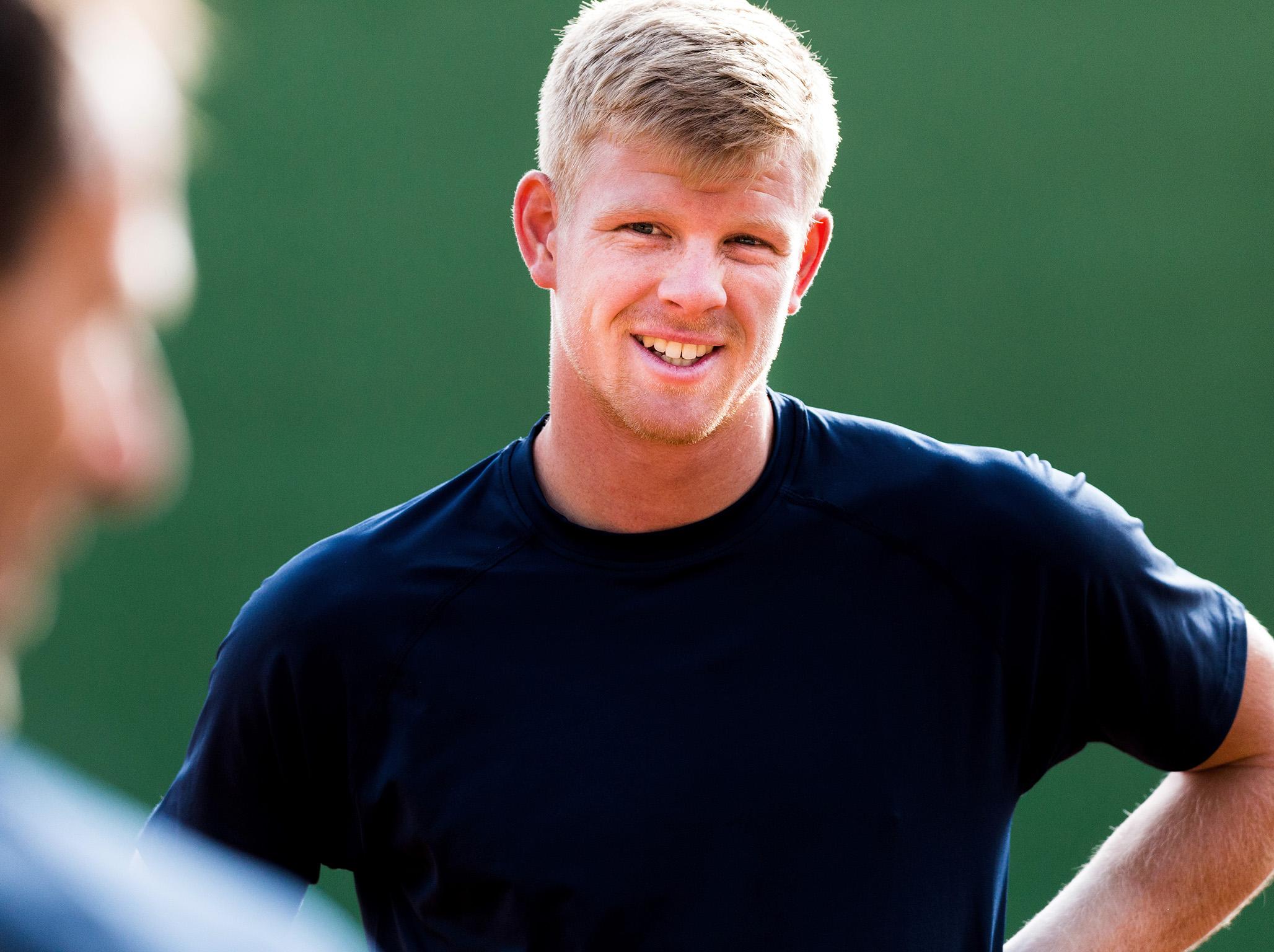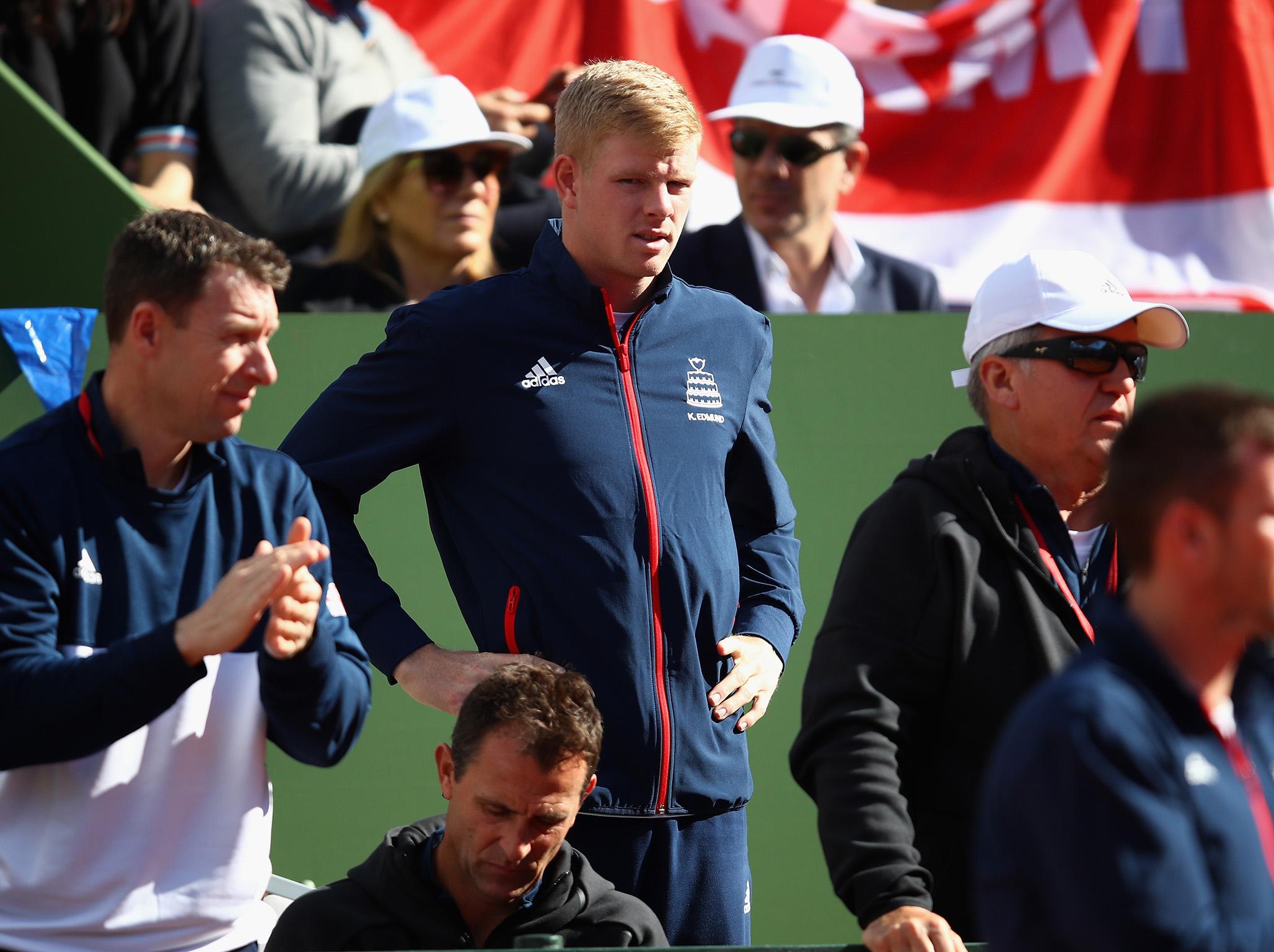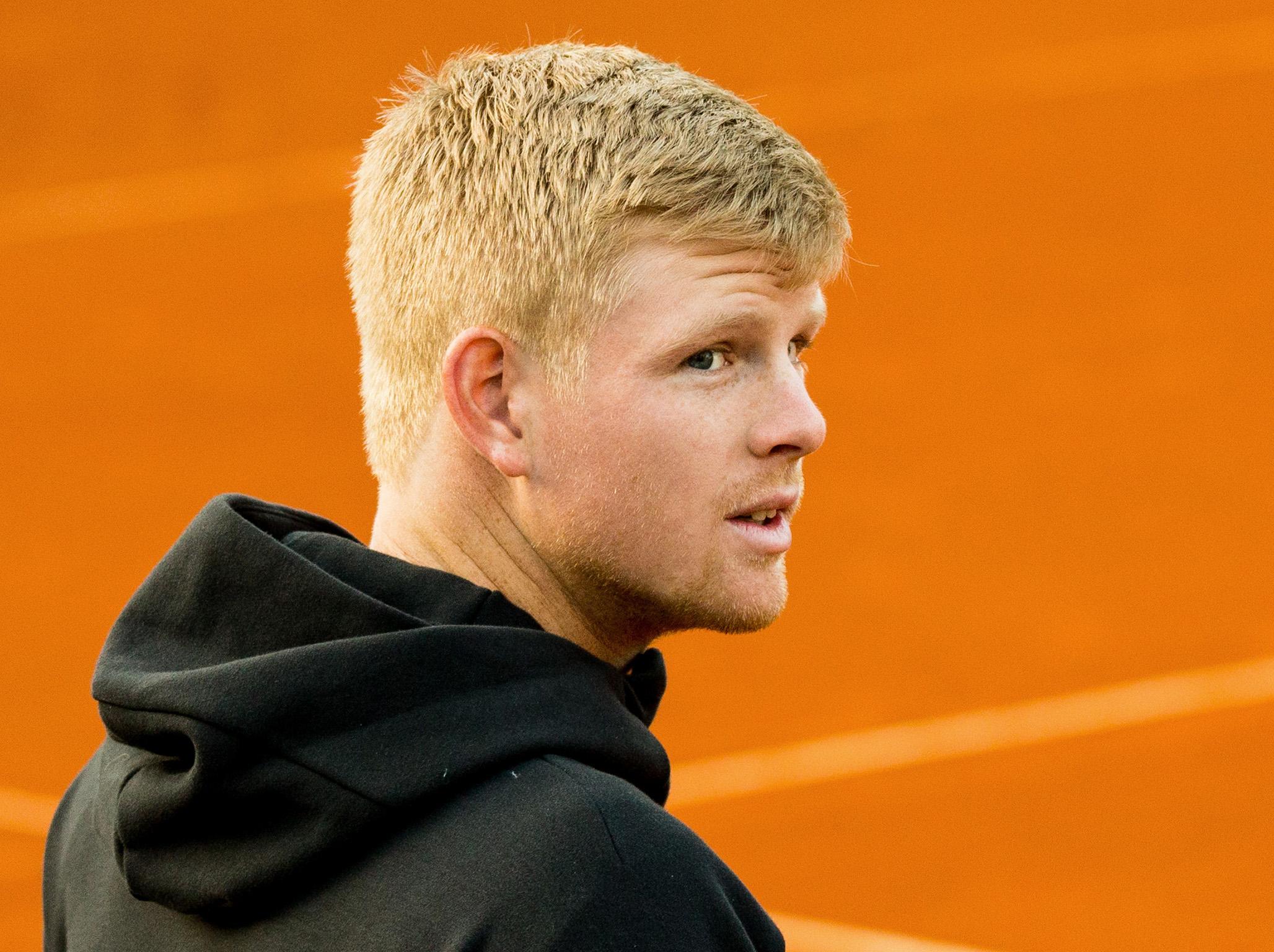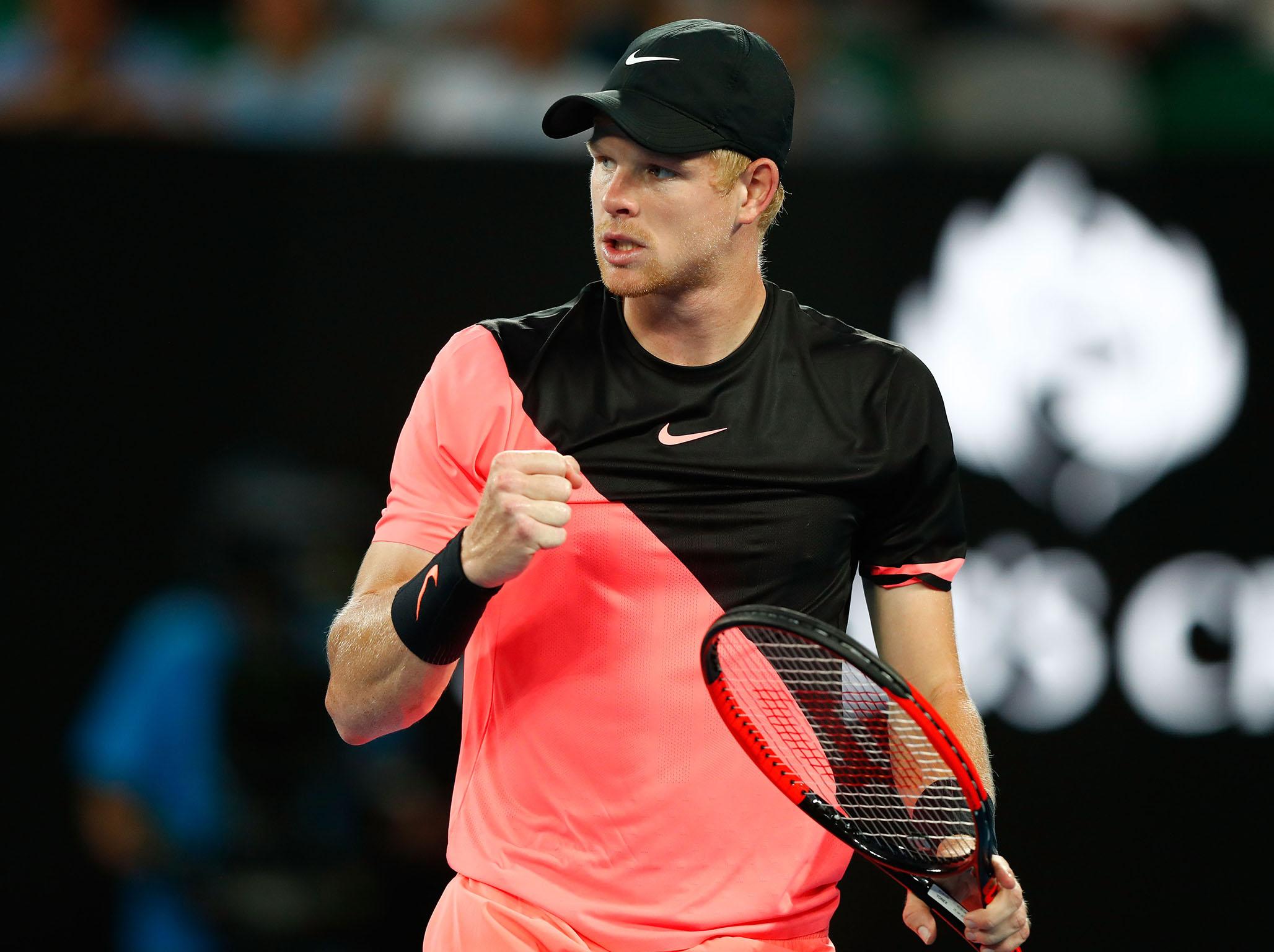The making of Kyle Edmund, Great Britain’s new No 1 equipped to handle the challenge of following Andy Murray
After 12 years as Britain’s highest ranked male player, Andy Murray will be replaced at the top of the tree on Monday by Kyle Edmund

It remains to be seen whether it will be a long-term changing of the guard, but for the next few months at least British tennis will have a new No 1. After 12 years as Britain’s highest ranked male player, Andy Murray will be replaced at the top of the tree on Monday by Kyle Edmund.
The toppling of Murray was inevitable from the moment the 30-year-old Scot decided early in January to have an operation to repair the injury to his right hip which has kept him out of competition since he limped out of Wimbledon eight months ago.
Murray is on schedule to return to tournament play in the grass-court season – and perhaps even earlier – but has been shedding world ranking points ever since last summer.
The rankings are based on a rolling total of points earned over the previous 12 months. Murray’s loss of the 500 points he earned by winning the Dubai title last year is expected to see him fall to No 29 in the world rankings in Monday’s updated list, while 23-year-old Edmund will climb one place to his latest career-high position at No 24.

“It’s humbling to become the British No 1 and perhaps unwittingly, as Andy has dropped down in rankings due to his injury,” Edmund said in a statement released by his management company. “As proud as I am, I would have been much happier had Andy stayed healthy and occupied his place at the very top where he belongs. Wishing Andy a speedy recovery and I hope to battle it out with him in a more legitimate fashion in years to come.”
Although players usually insist that being national No 1 is of little importance – they are more concerned with the world rankings – it was notable that British Airways chose the day of Edmund’s rise to the top to announce that he has become an ambassador for the airline.
Edmund will become only the 12th British No 1 since the official men’s world rankings were launched in 1973. In the 23 years since Greg Rusedski replaced Jeremy Bates as No 1 in May 1995, Murray and Tim Henman are the only other players to have topped the British men’s list.
While Henman and Rusedski battled each other for supremacy over several years – both men reached No 4 in the world and at times were both ranked in the top 10 – Murray’s reign at the top of the British order went unchallenged for years on end.
In the first week of March 2006 Murray was world No 44, Henman No 45 and Rusedski No 46. However, until the last few weeks of the Scot’s unbroken run of 11 and a half years in the world’s top 20 – between August 2006 and February 2018 – the closest any other Briton got to him was when Dan Evans reached No 41 in the rankings last year. Evans, who is expected to drop out of the world’s top 600 on Monday, is currently serving a one-year suspension for a drugs offence which is due to expire next month.
Edmund first broke into the world’s top 100 in the summer of 2015. He made the top 40 in October 2016, reached a temporary plateau in terms of his world ranking in 2017 but took a huge leap forward when he reached his first Grand Slam semi-final at this year’s Australian Open.
Murray has often given a helping hand along the way, having invited Edmund to join him at warm-weather training camps in the off-season and hit with him in practice.
“Kyle is improving every time I train with him,” Murray said last year. “I’ve done three training blocks with him now, I’ve spent a bunch of time practising with him at tournaments and at the Davis Cup.”

Edmund made his Davis Cup debut in the 2015 final, when he let slip a two-set lead against David Goffin in the opening rubber before Murray secured Britain’s first triumph in the competition for 79 years by winning both his singles and the doubles alongside his brother Jamie.
Murray and Edmund could hardly be more different in terms of both their character and their game. Murray, despite a natural shyness, is rarely afraid to speak his own mind, while the self-effacing Edmund usually plays his cards close to his chest.
On the court Murray has always been a wonderfully inventive player, capable of doing almost anything with his racket. Edmund has less variety but makes up for that with his formidable power and has one of the sport’s biggest forehands.
Although his game might appear better suited to quicker courts, Edmund’s favourite surface is clay. He has never failed to win a match at the French Open, though his best Grand Slam results have actually been on hard courts.
In 2016 Edmund reached the fourth round of the US Open, knocking out Richard Gasquet and John Isner along the way, and six weeks ago he enjoyed the best win of his career when he beat Grigor Dimitrov, the world No 3, at the Australian Open before losing to Marin Cilic in the semi-finals.
The recent upturn in his fortunes followed a number of significant changes last year. Having grown up in Yorkshire after his family moved to Britain from Johannesburg (where he was born) when he was three, he has now moved his base to the Bahamas.

Edmund also changed coaches last year. After parting company with Ryan Jones, he recruited the veteran Swede, Fredrik Rosengren, who is being assisted by Mark Hilton, Evans’ former coach.
Having suffered a hip injury in Melbourne Edmund has not played since, though it was flu that kept him out of two clay-court tournaments in Buenos Aires and Rio de Janeiro last month. “I am now back on track and excited to get back to it,” he said. “I’m all set and ready to play in Indian Wells and Miami.”
Edmund will be hoping to improve on his past results at both Masters Series tournaments. He has won only one match in his two previous appearances in Indian Wells and only one in four appearances in Miami.
While the Australian Open gave Edmund a taste of what life would be like as Britain’s main hope in the men’s game, these tournaments in the US will be the first events where he will be competing as the country’s official No 1. The early indications, nevertheless, are that the 23-year-old is well equipped to handle whatever challenges come his way.
Join our commenting forum
Join thought-provoking conversations, follow other Independent readers and see their replies
Comments
Bookmark popover
Removed from bookmarks